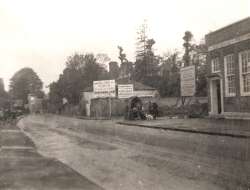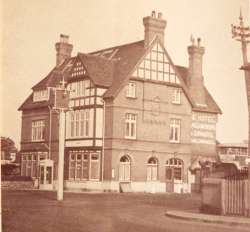History of West Wickham
There has been a settlement in the area of West Wickham since Roman times at least as Wickham is a Saxon word meaning a settlement on the site of an earlier Romano-British one. Some claim this to be the lost city of Noviomagus. The "West" was added to avoid confusion with the other Wickham (now East) near Welling.
Early settlement was scattered, probably beginning around the church and only later spreading up the hill around the present High Street.
The arrival of the railway from Elmers End in 1882 made surprisingly little difference to the village and apart from a few roads off the High Street and the Railway Hotel, West Wickham remained a rural settlement until the 1920s.
The electrification of the railway in 1926 was closely followed by the death of Lord of the Manor and major property holder, Sir John Lennard, in 1928. These events and the breakup of other local estates were the catalyst for growth. Journey times to London had improved and plenty of land was available for building. West Wickham mushroomed. The village High Street filled with shops and the fields were covered with houses that varied little in design or appearance.
Mains drainage was fitted, buses laid on and by 1933 the transition from village to suburb was almost complete. In 1935, this change was reflected by the new town’s transfer from Bromley RDC to the newly formed Beckenham Borough.
Post war developments have been limited. From 1956 Glebe Way linked the High Street with Coney Hall and the developments of supermarkets have changed shopping habits. But even so the High Street retains a good range of small independent shops. With just a single phase of development in its history, the town retains a surprisingly unified appearance.








